Firas A. Khasawneh
Hall Effect Thruster Forecasting using a Topological Approach for Data Assimilation
Apr 08, 2025Abstract:Hall Effect Thrusters (HETs) are electric thrusters that eject heavy ionized gas particles from the spacecraft to generate thrust. Although traditionally they were used for station keeping, recently They have been used for interplanetary space missions due to their high delta-V potential and their operational longevity in contrast to other thrusters, e.g., chemical. However, the operation of HETs involves complex processes such as ionization of gases, strong magnetic fields, and complicated solar panel power supply interactions. Therefore, their operation is extremely difficult to model thus necessitating Data Assimilation (DA) approaches for estimating and predicting their operational states. Because HET's operating environment is often noisy with non-Gaussian sources, this significantly limits applicable DA tools. We describe a topological approach for data assimilation that bypasses these limitations that does not depend on the noise model, and utilize it to forecast spatiotemporal plume field states of HETs. Our approach is a generalization of the Topological Approach for Data Assimilation (TADA) method that allows including different forecast functions. We show how TADA can be combined with the Long Short-Term Memory network for accurate forecasting. We then apply our approach to high-fidelity Hall Effect Thruster (HET) simulation data from the Air Force Research Laboratory (AFRL) rocket propulsion division where we demonstrate the forecast resiliency of TADA on noise contaminated, high-dimensional data.
Topological Detection of Phenomenological Bifurcations with Unreliable Kernel Densities
Jan 29, 2024



Abstract:Phenomenological (P-type) bifurcations are qualitative changes in stochastic dynamical systems whereby the stationary probability density function (PDF) changes its topology. The current state of the art for detecting these bifurcations requires reliable kernel density estimates computed from an ensemble of system realizations. However, in several real world signals such as Big Data, only a single system realization is available -- making it impossible to estimate a reliable kernel density. This study presents an approach for detecting P-type bifurcations using unreliable density estimates. The approach creates an ensemble of objects from Topological Data Analysis (TDA) called persistence diagrams from the system's sole realization and statistically analyzes the resulting set. We compare several methods for replicating the original persistence diagram including Gibbs point process modelling, Pairwise Interaction Point Modelling, and subsampling. We show that for the purpose of predicting a bifurcation, the simple method of subsampling exceeds the other two methods of point process modelling in performance.
Robust Zero-crossings Detection in Noisy Signals using Topological Signal Processing
Jan 18, 2023Abstract:We explore a novel application of zero-dimensional persistent homology from Topological Data Analysis (TDA) for bracketing zero-crossings of both one-dimensional continuous functions, and uniformly sampled time series. We present an algorithm and show its robustness in the presence of noise for a range of sampling frequencies. In comparison to state-of-the-art software-based methods for finding zeros of a time series, our method generally converges faster, provides higher accuracy, and is capable of finding all the roots in a given interval instead of converging only to one of them. We also present and compare options for automatically setting the persistence threshold parameter that influences the accurate bracketing of the roots.
Automated Surface Texture Analysis via Discrete Cosine Transform and Discrete Wavelet Transform
Apr 12, 2022
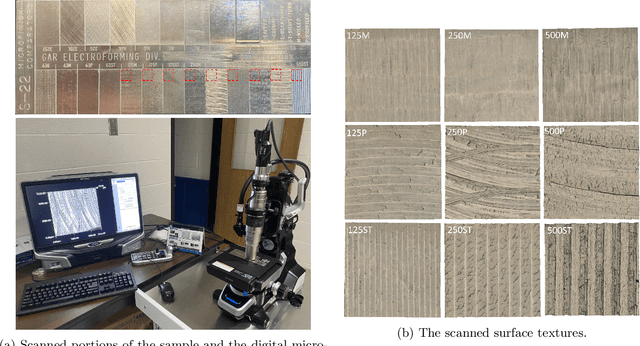
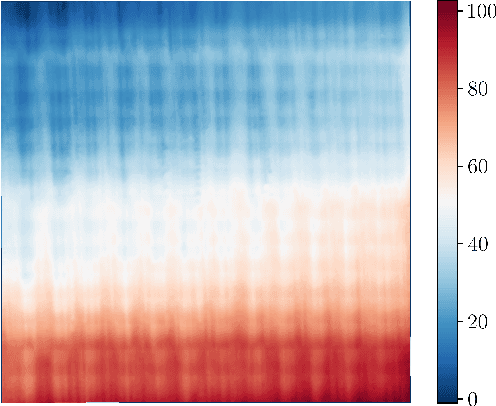

Abstract:Surface roughness and texture are critical to the functional performance of engineering components. The ability to analyze roughness and texture effectively and efficiently is much needed to ensure surface quality in many surface generation processes, such as machining, surface mechanical treatment, etc. Discrete Wavelet Transform (DWT) and Discrete Cosine Transform (DCT) are two commonly used signal decomposition tools for surface roughness and texture analysis. Both methods require selecting a threshold to decompose a given surface into its three main components: form, waviness, and roughness. However, although DWT and DCT are part of the ISO surface finish standards, there exists no systematic guidance on how to compute these thresholds, and they are often manually selected on case by case basis. This makes utilizing these methods for studying surfaces dependent on the user's judgment and limits their automation potential. Therefore, we present two automatic threshold selection algorithms based on information theory and signal energy. We use machine learning to validate the success of our algorithms both using simulated surfaces as well as digital microscopy images of machined surfaces. Specifically, we generate feature vectors for each surface area or profile and apply supervised classification. Comparing our results with the heuristic threshold selection approach shows good agreement with mean accuracies as high as 95\%. We also compare our results with Gaussian filtering (GF) and show that while GF results for areas can yield slightly higher accuracies, our results outperform GF for surface profiles. We further show that our automatic threshold selection has significant advantages in terms of computational time as evidenced by decreasing the number of mode computations by an order of magnitude compared to the heuristic thresholding for DCT.
Transfer Learning for Autonomous Chatter Detection in Machining
Apr 11, 2022



Abstract:Large-amplitude chatter vibrations are one of the most important phenomena in machining processes. It is often detrimental in cutting operations causing a poor surface finish and decreased tool life. Therefore, chatter detection using machine learning has been an active research area over the last decade. Three challenges can be identified in applying machine learning for chatter detection at large in industry: an insufficient understanding of the universality of chatter features across different processes, the need for automating feature extraction, and the existence of limited data for each specific workpiece-machine tool combination. These three challenges can be grouped under the umbrella of transfer learning. This paper studies automating chatter detection by evaluating transfer learning of prominent as well as novel chatter detection methods. We investigate chatter classification accuracy using a variety of features extracted from turning and milling experiments with different cutting configurations. The studied methods include Fast Fourier Transform (FFT), Power Spectral Density (PSD), the Auto-correlation Function (ACF), Wavelet Packet Transform (WPT), and Ensemble Empirical Mode Decomposition (EEMD). We also examine more recent approaches based on Topological Data Analysis (TDA) and similarity measures of time series based on Discrete Time Warping (DTW). We evaluate the transfer learning potential of each approach by training and testing both within and across the turning and milling data sets. Our results show that carefully chosen time-frequency features can lead to high classification accuracies albeit at the cost of requiring manual pre-processing and the tagging of an expert user. On the other hand, we found that the TDA and DTW approaches can provide accuracies and F1 scores on par with the time-frequency methods without the need for manual preprocessing.
Data-driven and Automatic Surface Texture Analysis Using Persistent Homology
Oct 19, 2021



Abstract:Surface roughness plays an important role in analyzing engineering surfaces. It quantifies the surface topography and can be used to determine whether the resulting surface finish is acceptable or not. Nevertheless, while several existing tools and standards are available for computing surface roughness, these methods rely heavily on user input thus slowing down the analysis and increasing manufacturing costs. Therefore, fast and automatic determination of the roughness level is essential to avoid costs resulting from surfaces with unacceptable finish, and user-intensive analysis. In this study, we propose a Topological Data Analysis (TDA) based approach to classify the roughness level of synthetic surfaces using both their areal images and profiles. We utilize persistent homology from TDA to generate persistence diagrams that encapsulate information on the shape of the surface. We then obtain feature matrices for each surface or profile using Carlsson coordinates, persistence images, and template functions. We compare our results to two widely used methods in the literature: Fast Fourier Transform (FFT) and Gaussian filtering. The results show that our approach yields mean accuracies as high as 97%. We also show that, in contrast to existing surface analysis tools, our TDA-based approach is fully automatable and provides adaptive feature extraction.
On Transfer Learning of Traditional Frequency and Time Domain Features in Turning
Aug 28, 2020



Abstract:There has been an increasing interest in leveraging machine learning tools for chatter prediction and diagnosis in discrete manufacturing processes. Some of the most common features for studying chatter include traditional signal processing tools such as Fast Fourier Transform (FFT), Power Spectral Density (PSD), and the Auto-correlation Function (ACF). In this study, we use these tools in a supervised learning setting to identify chatter in accelerometer signals obtained from a turning experiment. The experiment is performed using four different tool overhang lengths with varying cutting speed and the depth of cut. We then examine the resulting signals and tag them as either chatter or chatter-free. The tagged signals are then used to train a classifier. The classification methods include the most common algorithms: Support Vector Machine (SVM), Logistic Regression (LR), Random Forest (RF), and Gradient Boost (GB). Our results show that features extracted from the Fourier spectrum are the most informative when training a classifier and testing on data from the same cutting configuration yielding accuracy as high as %96. However, the accuracy drops significantly when training and testing on two different configurations with different structural eigenfrequencies. Thus, we conclude that while these traditional features can be highly tuned to a certain process, their transfer learning ability is limited. We also compare our results against two other methods with rising popularity in the literature: Wavelet Packet Transform (WPT) and Ensemble Empirical Mode Decomposition (EEMD). The latter two methods, especially EEMD, show better transfer learning capabilities for our dataset.
Chatter Diagnosis in Milling Using Supervised Learning and Topological Features Vector
Oct 27, 2019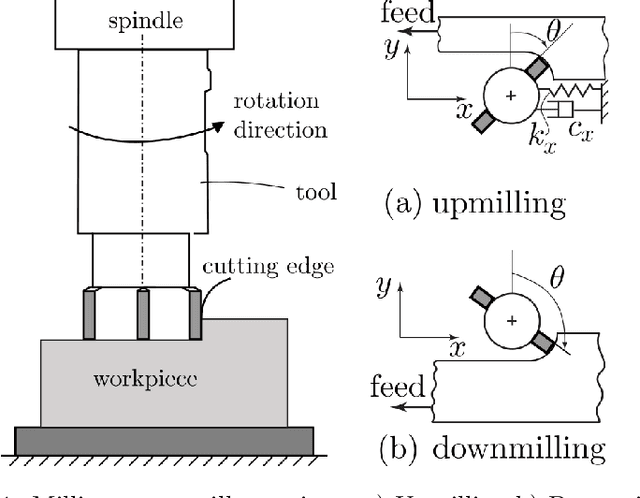

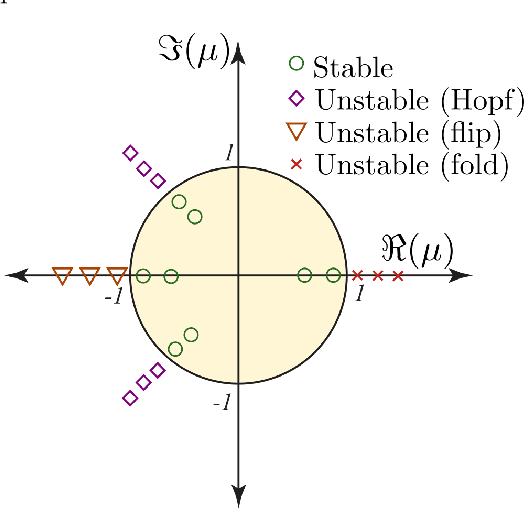
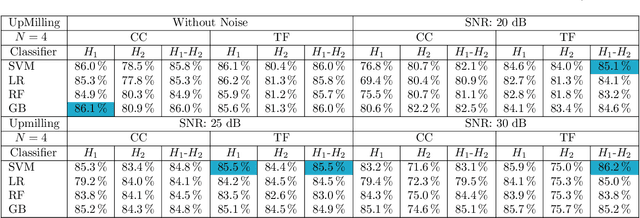
Abstract:Chatter detection has become a prominent subject of interest due to its effect on cutting tool life, surface finish and spindle of machine tool. Most of the existing methods in chatter detection literature are based on signal processing and signal decomposition. In this study, we use topological features of data simulating cutting tool vibrations, combined with four supervised machine learning algorithms to diagnose chatter in the milling process. Persistence diagrams, a method of representing topological features, are not easily used in the context of machine learning, so they must be transformed into a form that is more amenable. Specifically, we will focus on two different methods for featurizing persistence diagrams, Carlsson coordinates and template functions. In this paper, we provide classification results for simulated data from various cutting configurations, including upmilling and downmilling, in addition to the same data with some added noise. Our results show that Carlsson Coordinates and Template Functions yield accuracies as high as 96% and 95%, respectively. We also provide evidence that these topological methods are noise robust descriptors for chatter detection.
Adaptive Partitioning for Template Functions on Persistence Diagrams
Oct 18, 2019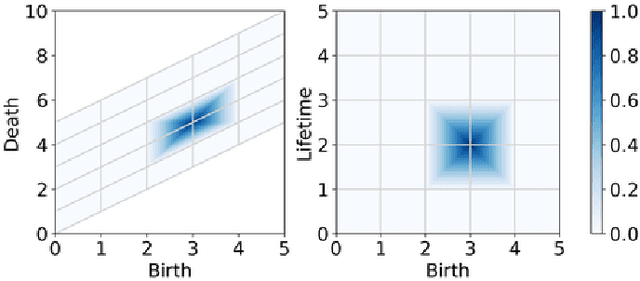
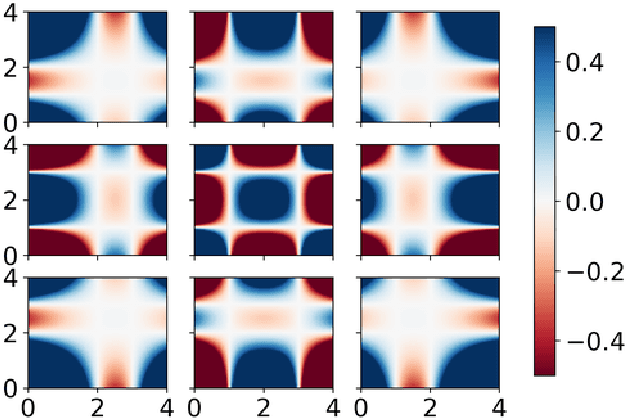
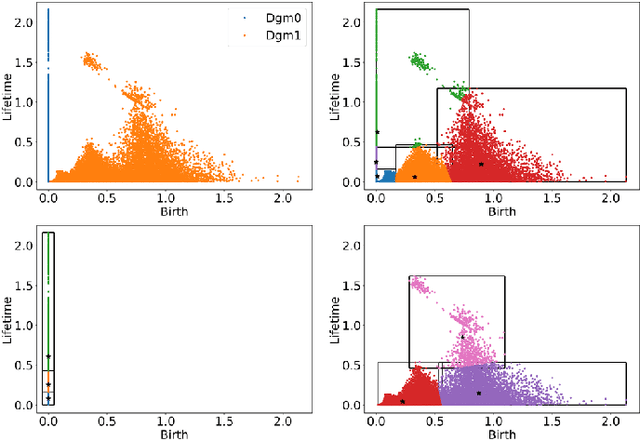
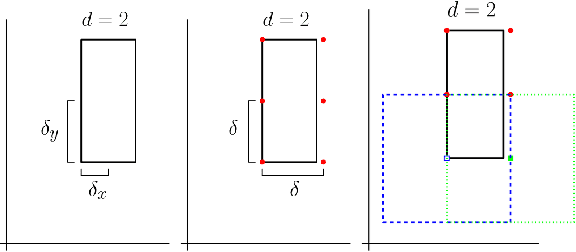
Abstract:As the field of Topological Data Analysis continues to show success in theory and in applications, there has been increasing interest in using tools from this field with methods for machine learning. Using persistent homology, specifically persistence diagrams, as inputs to machine learning techniques requires some mathematical creativity. The space of persistence diagrams does not have the desirable properties for machine learning, thus methods such as kernel methods and vectorization methods have been developed. One such featurization of persistence diagrams by Perea, Munch and Khasawneh uses continuous, compactly supported functions, referred to as "template functions," which results in a stable vector representation of the persistence diagram. In this paper, we provide a method of adaptively partitioning persistence diagrams to improve these featurizations based on localized information in the diagrams. Additionally, we provide a framework to adaptively select parameters required for the template functions in order to best utilize the partitioning method. We present results for application to example data sets comparing classification results between template function featurizations with and without partitioning, in addition to other methods from the literature.
Chatter Detection in Turning Using Machine Learning and Similarity Measures of Time Series via Dynamic Time Warping
Aug 05, 2019


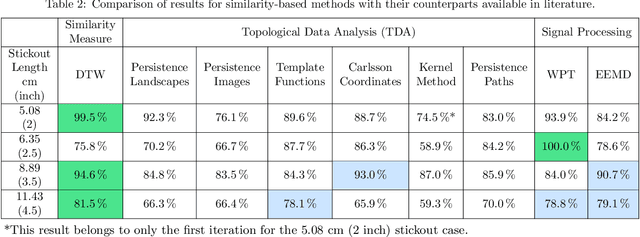
Abstract:Chatter detection from sensor signals has been an active field of research. While some success has been reported using several featurization tools and machine learning algorithms, existing methods have several drawbacks such as manual preprocessing and requiring a large data set. In this paper, we present an alternative approach for chatter detection based on K-Nearest Neighbor (kNN) algorithm for classification and the Dynamic Time Warping (DTW) as a time series similarity measure. The used time series are the acceleration signals acquired from the tool holder in a series of turning experiments. Our results, show that this approach achieves detection accuracies that in most cases outperform existing methods. We compare our results to the traditional methods based on Wavelet Packet Transform (WPT) and the Ensemble Empirical Mode Decomposition (EEMD), as well as to the more recent Topological Data Analysis (TDA) based approach. We show that in three out of four cutting configurations our DTW-based approach attains the highest average classification rate reaching in one case as high as 99% accuracy. Our approach does not require feature extraction, is capable of reusing a classifier across different cutting configurations, and it uses reasonably sized training sets. Although the resulting high accuracy in our approach is associated with high computational cost, this is specific to the DTW implementation that we used. Specifically, we highlight available, very fast DTW implementations that can even be implemented on small consumer electronics. Therefore, further code optimization and the significantly reduced computational effort during the implementation phase make our approach a viable option for in-process chatter detection.
 Add to Chrome
Add to Chrome Add to Firefox
Add to Firefox Add to Edge
Add to Edge